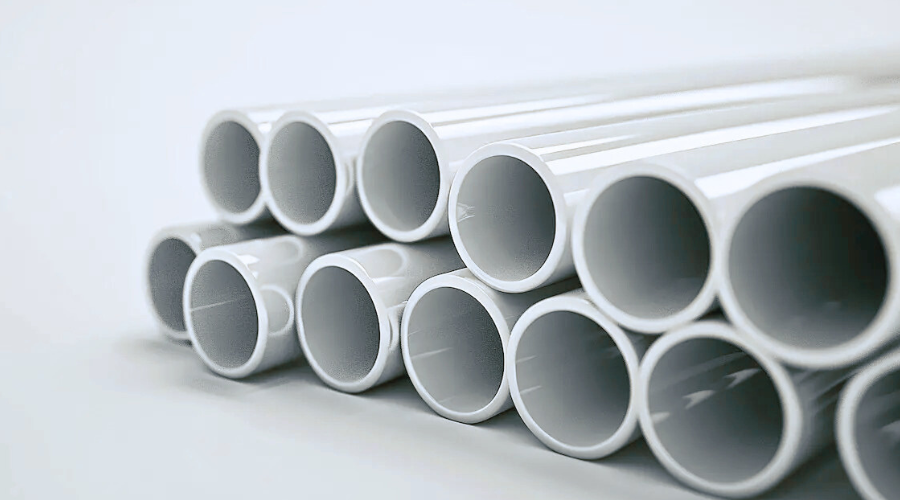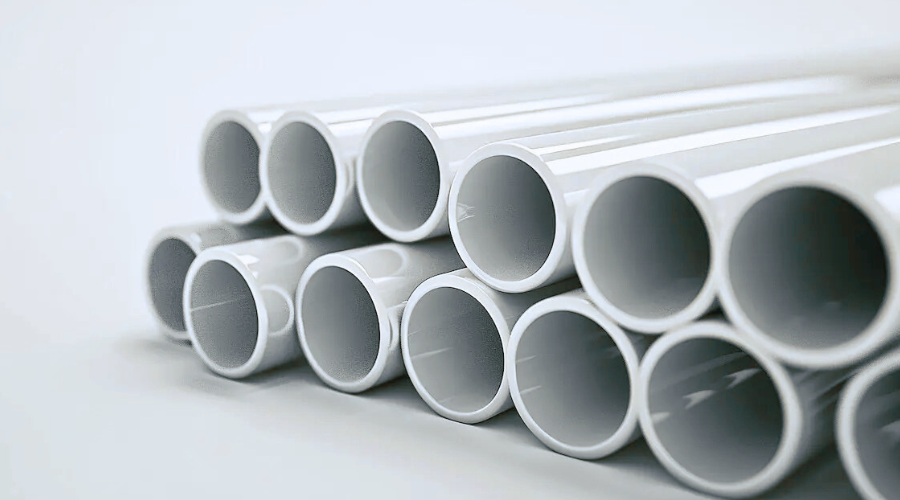
Johnny Xiong
Rapid Tooling Expert
Contents
Polyvinyl chloride (PVC) is one of the most versatile and widely used thermoplastics in the world. Known for its excellent balance of durability, chemical resistance, and cost-effectiveness, PVC has become a material of choice for countless industrial and consumer products. Among the various manufacturing methods used to shape PVC, injection molding stands out as one of the most efficient and scalable.
In this article, we will explore the PVC injection molding process, its key benefits, and common industrial applications. We will also look at the challenges of working with PVC and best practices to achieve high-quality molded components.

1. Understanding PVC and Its Characteristics
PVC (Polyvinyl Chloride) is a synthetic thermoplastic polymer produced through the polymerization of vinyl chloride monomers. It is classified into two main types:
Rigid PVC (RPVC or uPVC): Strong, durable, and widely used for pipes, profiles, and construction materials.
Flexible PVC: Made by adding plasticizers (like phthalates or alternative compounds) to improve flexibility and softness, often used for cables, medical tubing, and consumer goods.
PVC’s unique molecular structure gives it:
Excellent chemical resistance to acids, bases, and salts.
Low flammability, thanks to its high chlorine content.
High dimensional stability, even under mechanical stress.
Compatibility with additives, allowing manufacturers to modify color, hardness, and surface properties.
These characteristics make PVC a perfect candidate for injection molding, where precision, repeatability, and surface finish are critical.
2. What Is PVC Injection Molding?
PVC injection molding is a manufacturing process that involves melting PVC resin and injecting it into a mold cavity under high pressure to create complex and precise parts. Once the molten PVC fills the mold, it is cooled and solidified into the desired shape.
This process allows manufacturers to mass-produce high-quality PVC components with tight tolerances and consistent properties.
Basic Principle
The principle of PVC injection molding is similar to other thermoplastics such as ABS or polypropylene, but due to PVC’s chemical nature and processing sensitivity, special care is needed in temperature control and equipment selection.
3. The PVC Injection Molding Process
Let’s break down the step-by-step process:
Step 1: Material Preparation
PVC is typically supplied as dry pellets or powder. Before molding, the material must be dried to remove any moisture, as even a small amount of water can cause defects like bubbles or surface imperfections.
Additionally, stabilizers, lubricants, and plasticizers may be blended with the resin to improve processability and final part performance. For example:
Thermal stabilizers prevent degradation at high temperatures.
Lubricants aid in mold release and improve flow.
Colorants or pigments are added for aesthetic customization.
Step 2: Feeding and Melting
The prepared PVC resin is fed into the hopper of the injection molding machine. The material passes through a heated barrel equipped with a rotating screw. The screw both conveys and melts the resin through frictional heat and controlled barrel temperatures.
Unlike other plastics, PVC is heat-sensitive and decomposes easily if overheated. Therefore, precise temperature control (typically between 160°C and 190°C) is crucial to prevent discoloration or the release of corrosive hydrogen chloride gas (HCl).
Step 3: Injection
Once the PVC melt reaches the desired viscosity, the screw moves forward, injecting the molten material into the closed mold cavity at high pressure (usually between 80–150 MPa).
The mold must be well-designed to ensure uniform flow and venting to avoid trapped air and burn marks.
Step 4: Cooling
After injection, the mold remains closed while the molten PVC cools and solidifies. Cooling time depends on the part’s thickness and mold temperature, but it is typically slower compared to other thermoplastics due to PVC’s low thermal conductivity.
Proper cooling ensures dimensional accuracy and reduces internal stresses.
Step 5: Ejection
Once the part has cooled sufficiently, the mold opens, and the finished component is ejected using pins or plates. The part may then undergo post-processing such as trimming, surface finishing, or assembly.
4. Key Parameters in PVC Injection Molding
To achieve consistent quality, several processing parameters must be carefully controlled:
| Parameter | Typical Range | Function / Importance |
|---|---|---|
| Barrel Temperature | 160°C–190°C | Prevents degradation while ensuring adequate melt flow |
| Mold Temperature | 40°C–80°C | Controls surface finish and cooling speed |
| Injection Pressure | 80–150 MPa | Ensures complete mold filling |
| Screw Speed | Moderate (20–60 rpm) | Prevents overheating and shear degradation |
| Cooling Time | 15–60 seconds | Depends on part thickness |
Failure to maintain these parameters can lead to defects like brittleness, discoloration, warping, or incomplete filling

5. Equipment Requirements for PVC Molding
Because PVC is corrosive and thermally sensitive, specialized equipment is recommended:
a. Corrosion-Resistant Injection Molding Machine
The barrel, screw, and nozzle should be made of stainless steel or chrome-plated alloys to resist corrosion from HCl gas.
b. Ventilated and Temperature-Controlled Mold
The mold must allow proper venting of gases and be equipped with efficient cooling channels to ensure uniform solidification.
c. PVC-Compatible Screw Design
A low-compression ratio screw (around 1.6–2.0:1) helps minimize shear and prevent degradation.
d. Exhaust or Fume Extraction System
Because PVC may emit small amounts of HCl during processing, an exhaust system is essential to protect operators and maintain workplace safety.
6. Benefits of PVC Injection Molding
PVC injection molding offers numerous advantages for manufacturers across industries:
- Excellent Dimensional Stability
PVC molded parts retain their shape under load and resist warping or deformation even under varying temperature conditions.
- Superior Chemical Resistance
PVC’s resistance to acids, alkalis, and salts makes it ideal for chemical containers, plumbing, and industrial applications.
- Cost-Effective Production
PVC resin is relatively inexpensive compared to other engineering plastics, and injection molding enables high-volume, low-cost production.
- Customizable Mechanical Properties
Through formulation, PVC can range from rigid and strong to flexible and elastic. This versatility broadens its range of applications.
- Flame Retardant Nature
PVC is inherently self-extinguishing due to its high chlorine content, reducing the need for additional flame retardants.
- Excellent Surface Finish
Injection molding allows for smooth, glossy surfaces or textured finishes depending on mold design, reducing the need for secondary operations.
- Recyclability
PVC scrap and defective parts can be re-ground and reused, improving material efficiency and sustainability.
7. Common Defects and How to Prevent Them
Even with its advantages, PVC molding can be challenging due to its narrow processing window. Common issues include:
| Defect | Possible Cause | Prevention Method |
|---|---|---|
| Discoloration (Yellowing or Blackening) | Overheating, long residence time | Lower barrel temperature, reduce screw speed |
| Bubbles or Voids | Moisture in material | Proper pre-drying |
| Burn Marks | Trapped air, poor venting | Add vents or vacuum system |
| Warping | Uneven cooling | Optimize mold temperature and cooling channels |
| Brittleness | Excessive shear | Use correct screw design and injection speed |
By maintaining optimal processing conditions, manufacturers can consistently produce high-quality PVC parts.
8. Applications of PVC Injection Molding
PVC injection molding is used in a wide range of industries, thanks to its adaptability and performance.
Construction and Building Materials
Rigid PVC is widely used for:
Electrical conduit fittings
Window and door profiles
Pipe fittings and valves
Wall panels and trims
Its strength, weather resistance, and flame retardancy make it ideal for long-lasting building components.
Electrical and Electronics
PVC’s excellent insulation properties and fire resistance make it suitable for:
Cable connectors and grommets
Switch housings
Insulation sleeves
Flexible PVC can also be molded for wire sheathing and protective coverings.
Automotive Industry
Injection-molded PVC parts appear in:
Interior trims and dashboards
Seals, gaskets, and air vent components
Electrical housings and protective caps
PVC’s durability and cost-efficiency help manufacturers meet performance and aesthetic requirements.
Medical Equipment
Medical-grade PVC is a preferred material for:
Tubing connectors
Syringe components
IV drip chambers
Its biocompatibility, chemical resistance, and ability to be sterilized make it indispensable in healthcare.
Consumer Goods
PVC molding allows for the production of:
Footwear soles
Toys and accessories
Household products like handles and containers
The ability to color, texture, and shape PVC freely supports creative and functional design.
Industrial Components
In the industrial sector, PVC molded parts include:
Pump components
Chemical storage containers
Equipment housings
Its chemical and mechanical resilience ensures reliability in demanding environments.
9. Environmental and Safety Considerations
While PVC is highly versatile, manufacturers must consider its environmental footprint and handle it safely.
Processing Safety
Maintain proper ventilation to remove HCl vapors.
Avoid overheating by keeping tight temperature control.
Use protective gear during maintenance and cleaning operations.
Recycling and Sustainability
Modern recycling technologies allow PVC waste to be reprocessed into new products. Both mechanical recycling (regrinding and remolding) and chemical recycling (breaking PVC into raw monomers) are gaining traction.
Eco-Friendly Formulations
The industry is moving toward phthalate-free plasticizers and lead-free stabilizers, making PVC products safer and more environmentally responsible.
10. Comparing PVC Injection Molding with Other Methods
| Process | Advantages | Limitations |
|---|---|---|
| PVC Extrusion | Ideal for continuous profiles (pipes, sheets) | Not suitable for complex shapes |
| Compression Molding | Simple and low cost for large parts | Less precise; slower cycle |
| Blow Molding | Great for hollow parts like bottles | Limited design flexibility |
| Injection Molding | High precision, fast production, detailed features | Higher equipment cost; sensitive processing |
Injection molding provides the best balance between accuracy, efficiency, and design complexity for medium-to-large production runs.
Conclusion
PVC injection molding remains a cornerstone of modern manufacturing due to its versatility, cost-effectiveness, and adaptability. From construction components to medical devices and consumer goods, PVC molded parts deliver reliable performance in diverse environments.
Mastering the PVC injection molding process requires precise temperature control, proper equipment, and careful material handling. When executed correctly, it offers outstanding results—producing durable, high-quality parts with minimal waste.
As industries move toward greener and smarter production methods, PVC injection molding continues to play a vital role, adapting to meet the demands of both manufacturers and the global market.
About HordRT
HordRT is a leading manufacturer specializing in rapid prototyping, injection molding, and precision tooling. With years of expertise in custom plastic molding—especially PVC, ABS, PC, and other engineering materials—HordRT provides high-quality, cost-effective, and scalable manufacturing solutions for global clients across automotive, medical, consumer goods, and industrial sectors.
Our state-of-the-art facilities, advanced molding equipment, and professional engineering team ensure precision, speed, and reliability from prototype to mass production. Whether you need PVC injection molding, low-volume manufacturing, or custom mold design, HordRT delivers parts that meet the highest international standards.
-q4gvl4k29y4hq8j9rjpapvj0ft06fje63olt7p210i.png)


